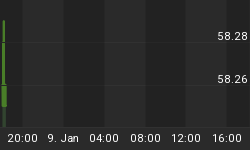Important warnings about deflation from Robert Prechter.
Telegraph.go.uk, May 26: "US money supply plunges at 1930s pace... The M3 money supply in the U.S. is contracting at an accelerating rate that now matches the average decline seen from 1929 to 1933, despite near zero interest rates and the biggest fiscal blitz in history."
Deflation is suddenly in the news again. It's a good moment to catch up on a few definitions, as well as strategies on how to beat this rare economic condition.
And who better to ask than EWI's president Robert Prechter? He predicted the first wave of deflation in the 2007-2009 "credit crunch" and has written on this topic extensively.
We've put together a great free resource for our Club EWI members: a 63-page "Deflation Survival Guide eBook," Prechter's most important deflation essays. Enjoy this excerpt -- and for details on how to read the eBook in full free, look below.
What Makes Deflation Likely Today?
Bob Prechter, Deflation Survival Guide, free Club EWI eBook
Following the Great Depression, the Fed and the U.S. government embarked on a program...both of increasing the creation of new money and credit and of fostering the confidence of lenders and borrowers so as to facilitate the expansion of credit. These policies both accommodated and encouraged the expansionary trend of the 'Teens and 1920s, which ended in bust, and the far larger expansionary trend that began in 1932 and which has accelerated over the past half-century. Other governments and central banks have followed similar policies. The International Monetary Fund, the World Bank and similar institutions, funded mostly by the U.S. taxpayer, have extended immense credit around the globe.
Their policies have supported nearly continuous worldwide inflation, particularly over the past thirty years. As a result, the global financial system is gorged with non-self-liquidating credit. Conventional economists excuse and praise this system under the erroneous belief that expanding money and credit promotes economic growth, which is terribly false. It appears to do so for a while, but in the long run, the swollen mass of debt collapses of its own weight, which is deflation, and destroys the economy. A devastated economy, moreover, encourages radical politics, which is even worse.
The value of credit that has been extended worldwide is unprecedented. Worse, most of this debt is the non-self-liquidating type. Much of it comprises loans to governments, investment loans for buying stock and real estate, and loans for everyday consumer items and services, none of which has any production tied to it. Even a lot of corporate debt is non-self-liquidating, since so much of corporate activity these days is related to finance rather than production.

Figure 11-5 is a stunning picture of the credit expansion of wave V of the 1920s (beginning the year that Congress authorized the Fed), which ended in a bust, and of wave V in the 1980s-1990s, which is even bigger.
...it has been the biggest credit expansion in history by a huge margin. Coextensively, not only is there a threat of deflation, but there is also the threat of the biggest deflation in history by a huge margin. ...
Read the rest of this important 63-page deflation study now, free! Here's what you'll learn:
- What Triggers the Change to Deflation
- Why Deflationary Crashes and Depressions Go Together
- Financial Values Can Disappear
- Deflation is a Global Story
- What Makes Deflation Likely Today?
- How Big a Deflation?
- Much, Much More
















